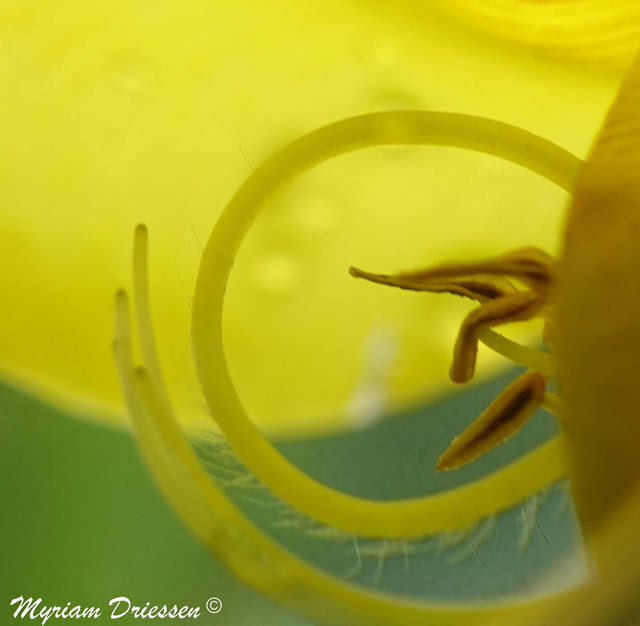
Cytisus scoparius, the common broom or Scotch broom, are blooming.
Flowers have a complex structure. The upper petal, called
the banner, is large and envelops the rest of the petals in bud, often
reflexing when the flower blooms. The two adjacent petals, the wings, surround
the two bottom petals. The two bottom petals are fused together at the apex
(remaining free at the base), forming a boat-like structure called the keel. When
an insect comes, the stamens send their pollen on it, allowing fecondation when
it enters another flower.
Use of the branches of these plants for sweeping gave
rise to the term broom for sweeping tools in the 15th century, gradually
replacing Old English besema (which survives as dialectal or archaic besom).
As many Fabaceae, like common gorse, brooms host bacteria in their roots
within structures called root nodules. These bacteria, known as rhizobia, have
the ability to take nitrogen gas out of the air and convert it to a form of
nitrogen that is usable to the host plant. This process is called nitrogen
fixation. The legume, acting as a host, and rhizobia, acting as a provider of
usable nitrate, form a symbiotic relation.
Old English bróm is from a common West Germanic *bráma-
(Old High German brâmo, "bramble"), from a Germanic stem bræ̂m-
of unknown origin, with an original sense of "thorny shrub" or
similar. Latin name comes from genista/genesta, after its name in Roman times, while some find its
origin in the Keltic gen, small shrurb.
The name of the House of Plantagenet, rulers of England in the
Middle Ages, may have been derived from common broom, which was then known as
"planta genista" in Latin. The plant was used as a heraldic badge by Geoffrey
V of Anjou and five other Plantagenet kings of England as a royal
emblem.

Aucun commentaire:
Enregistrer un commentaire